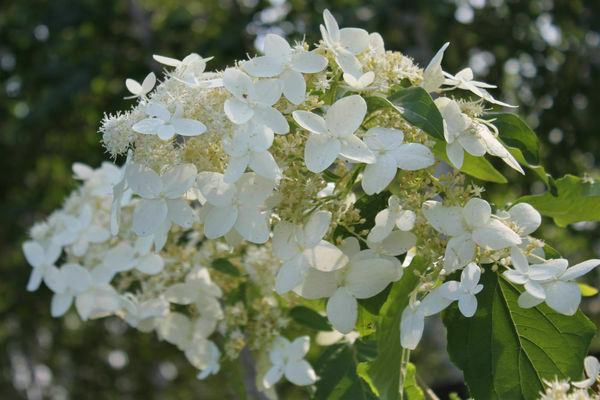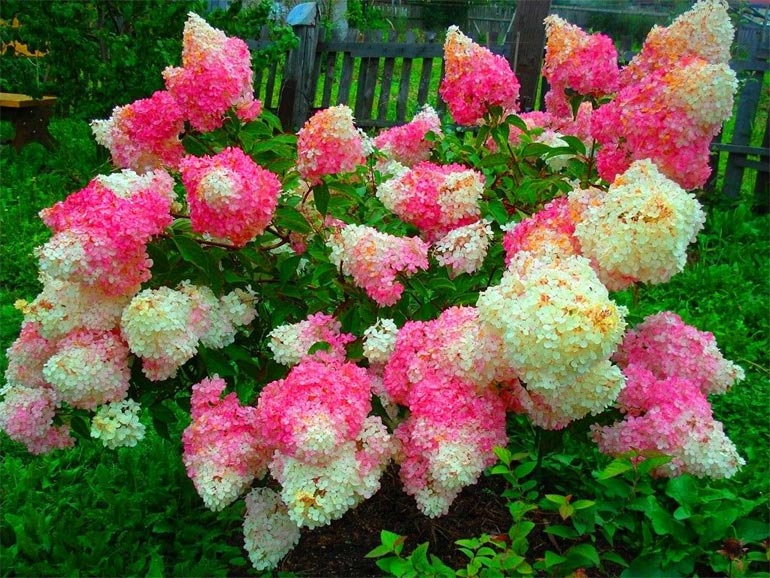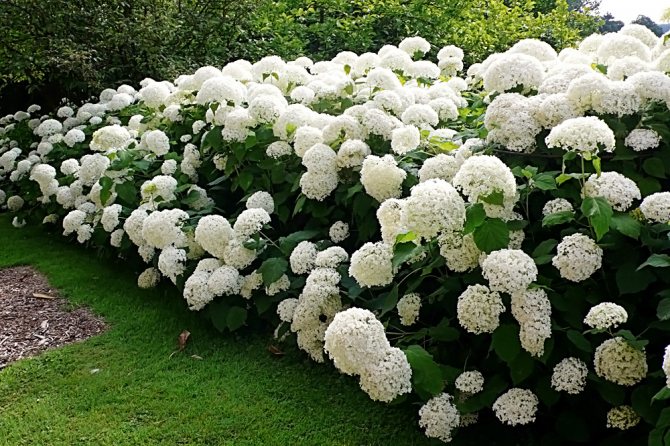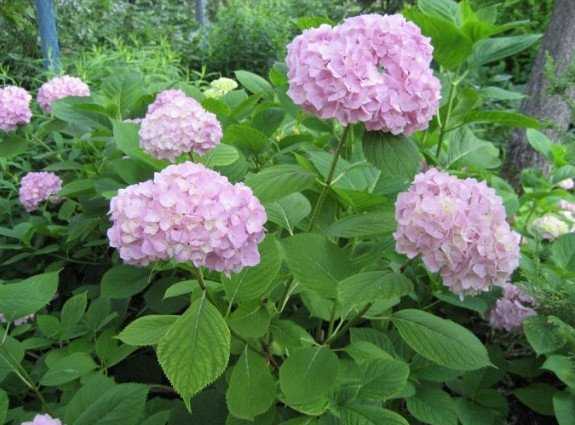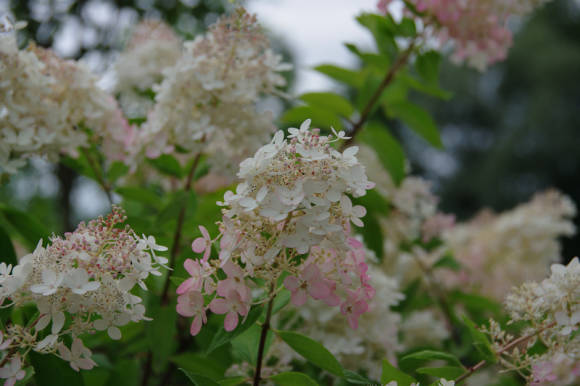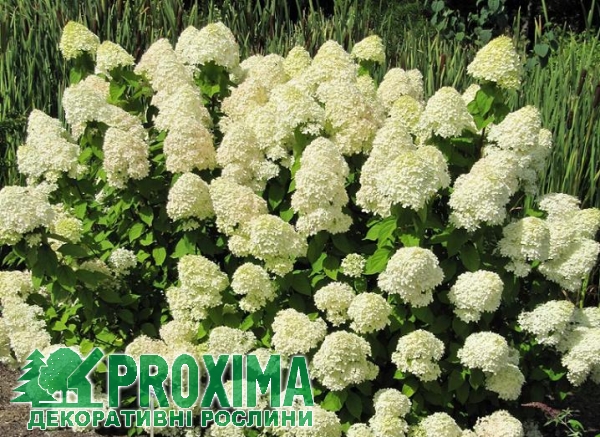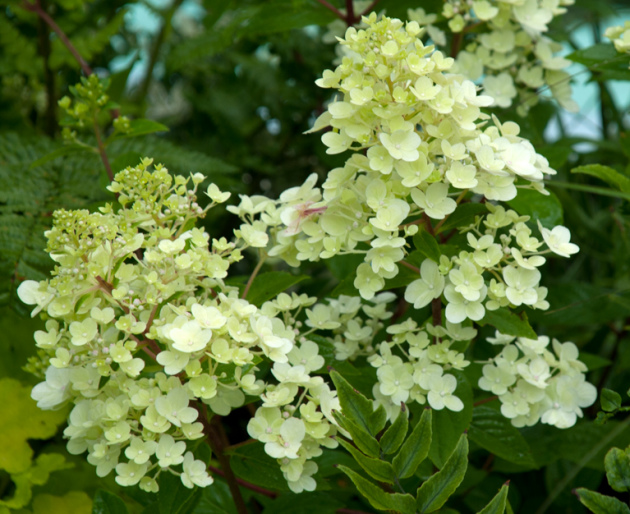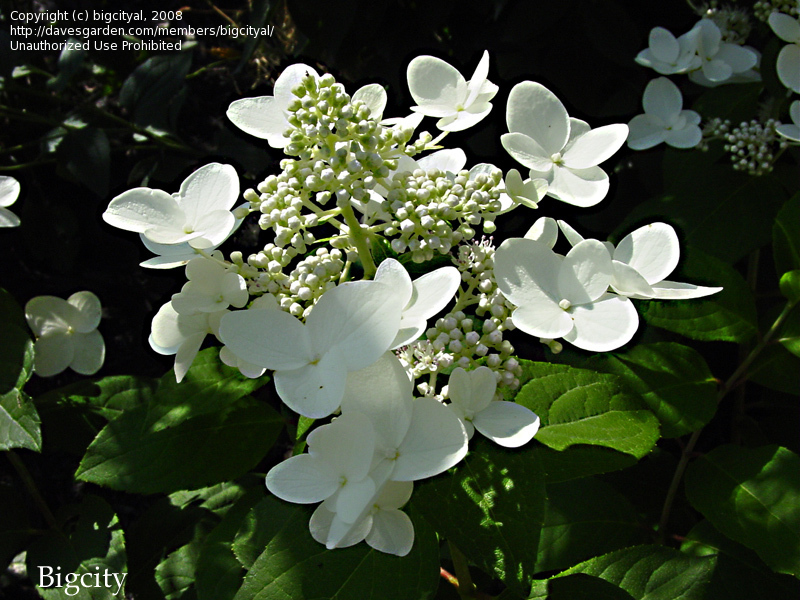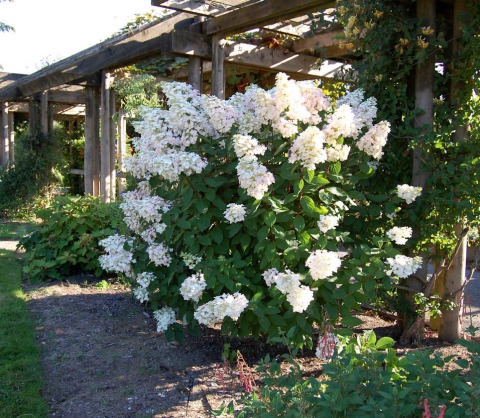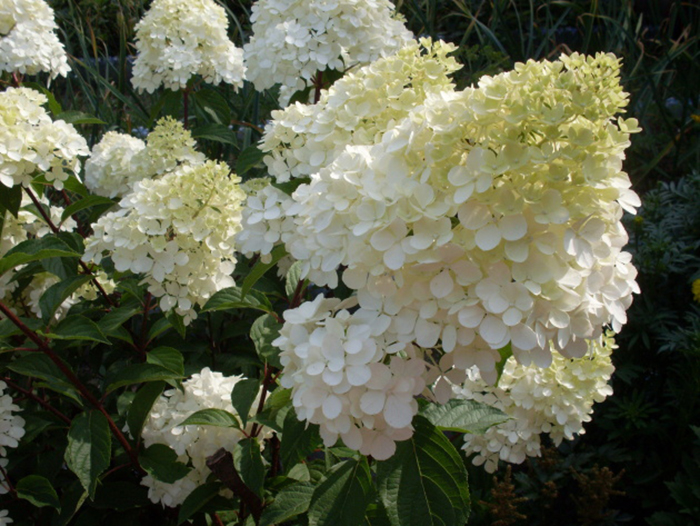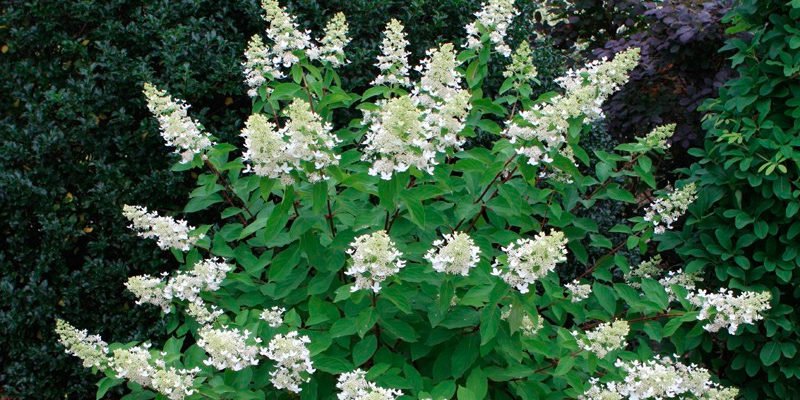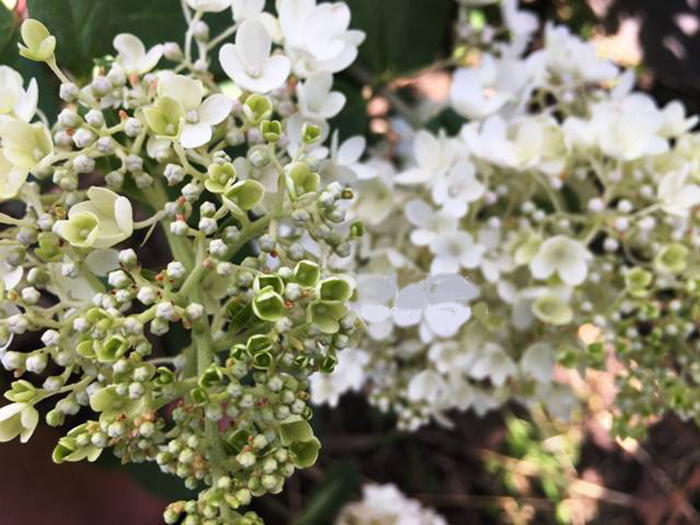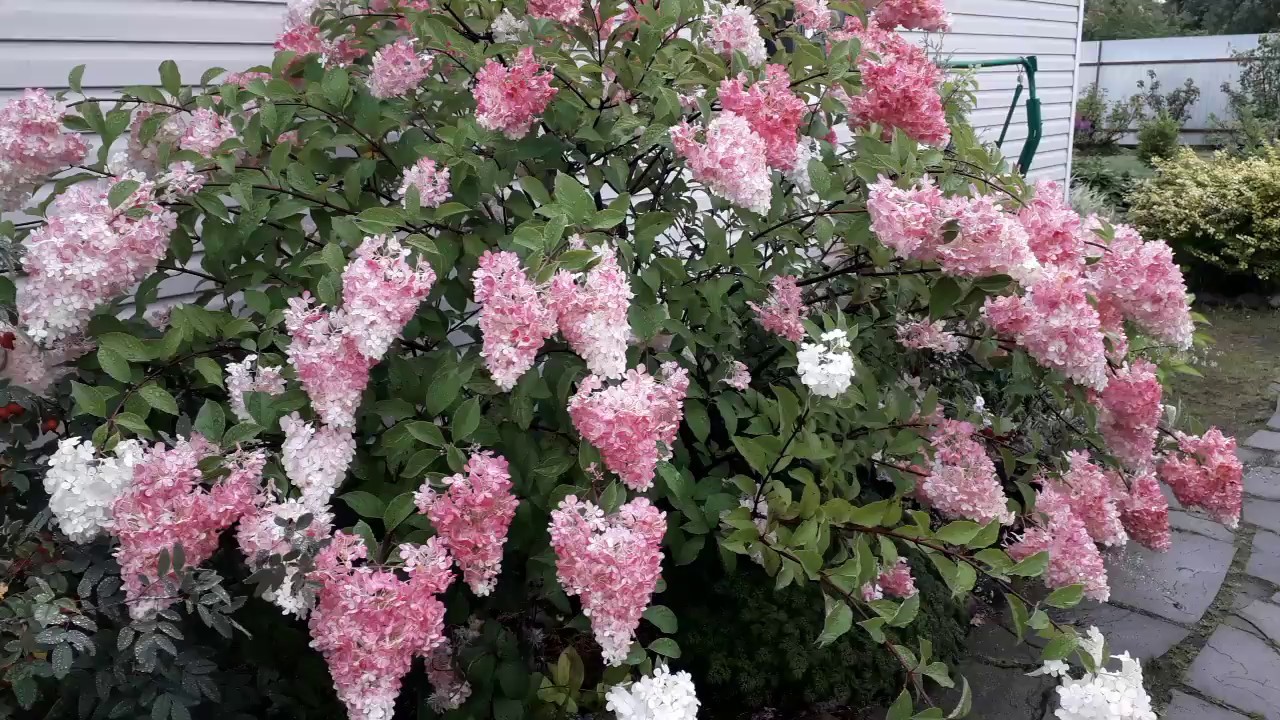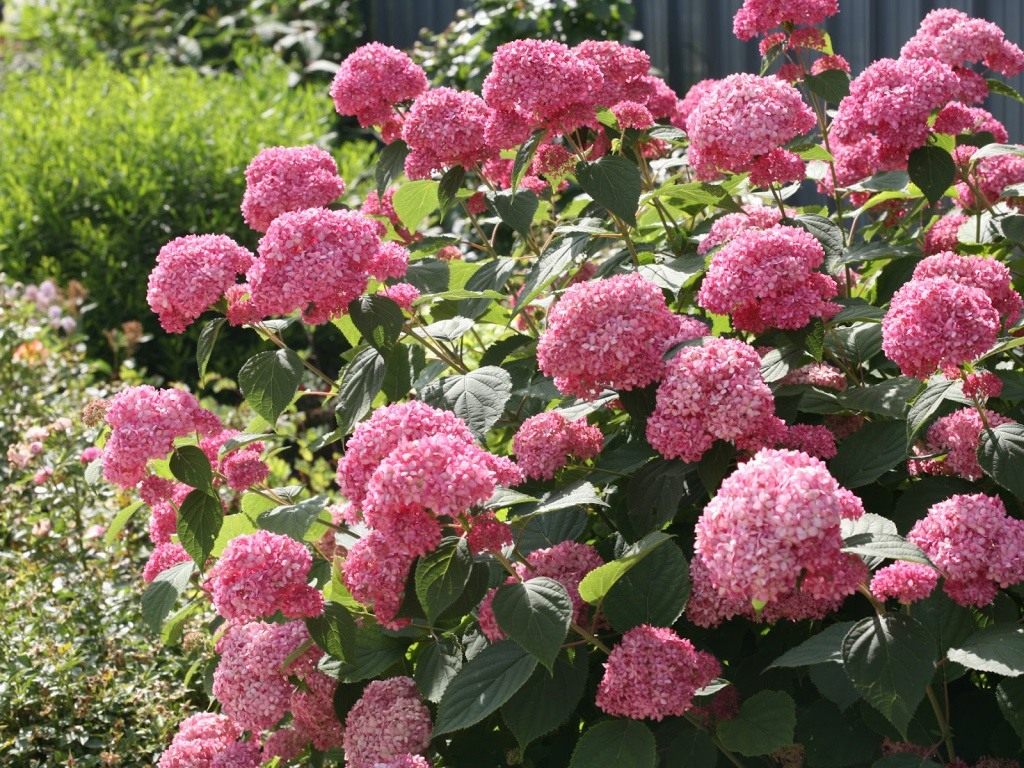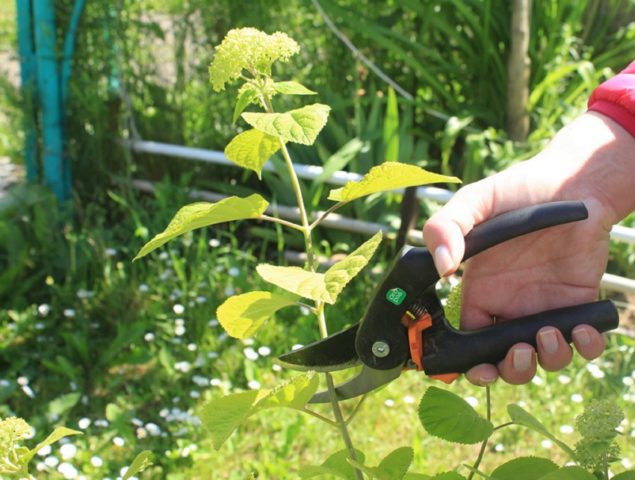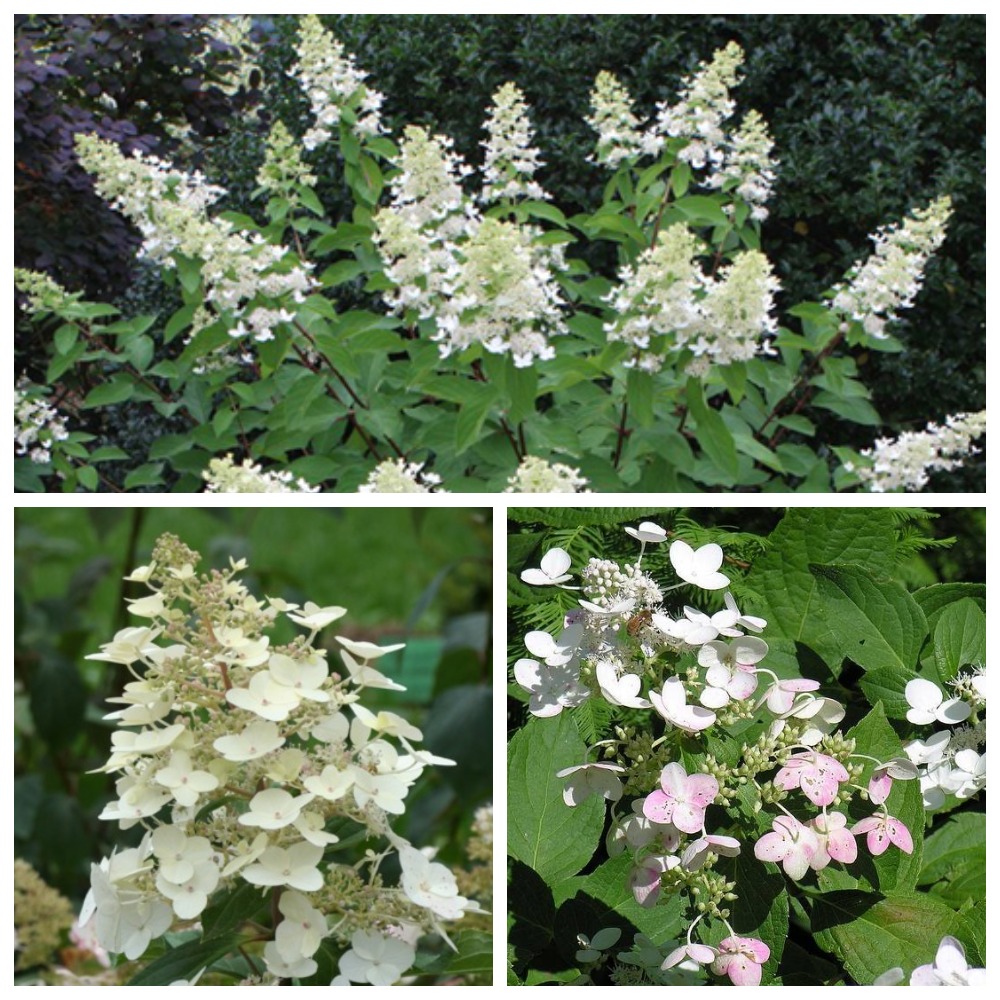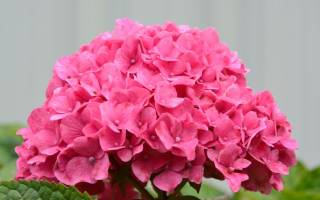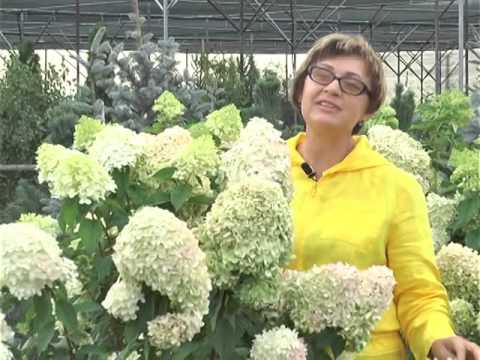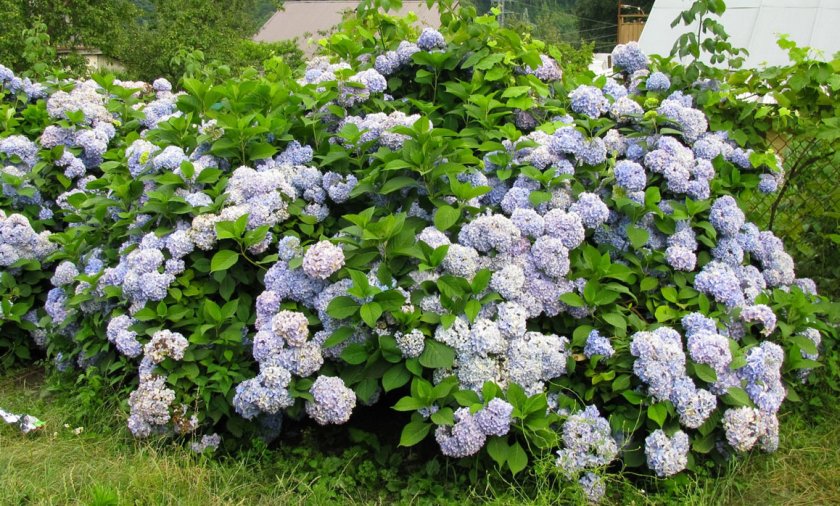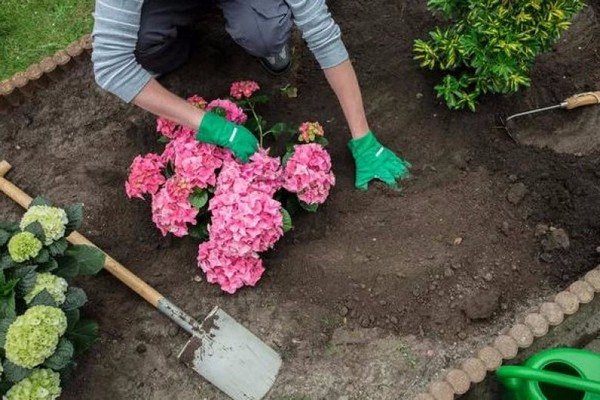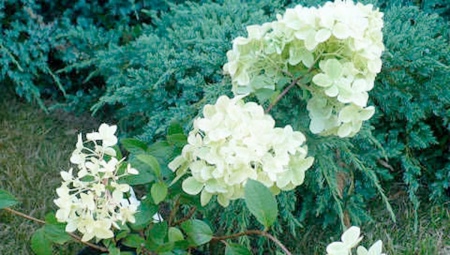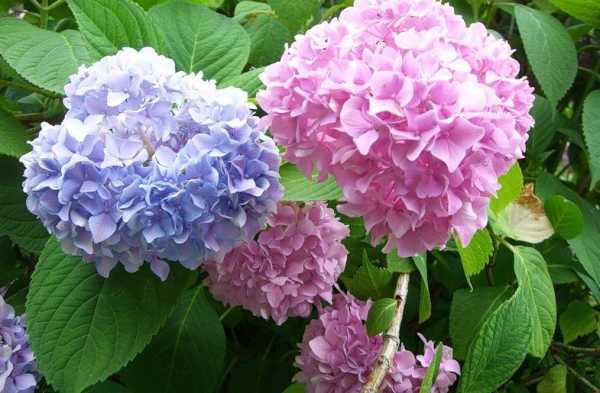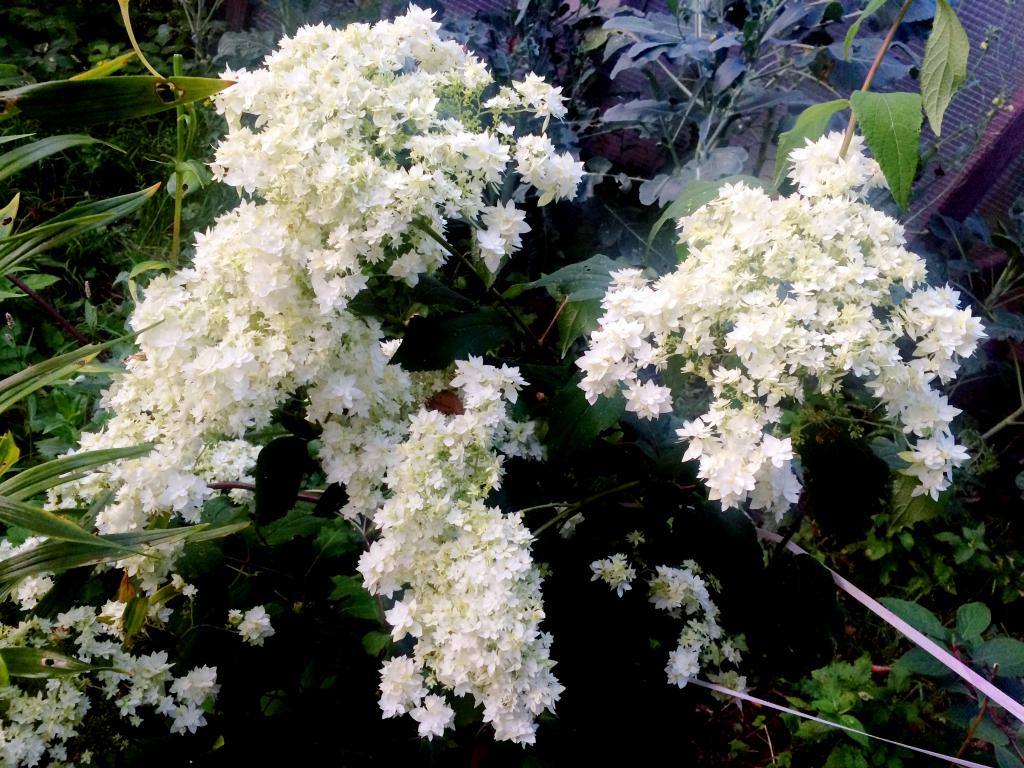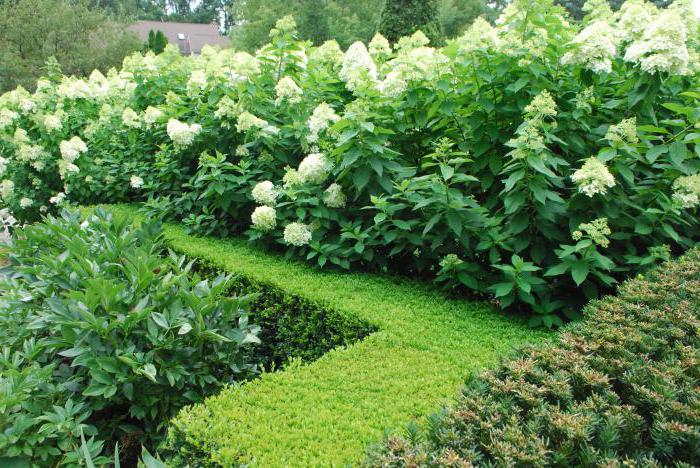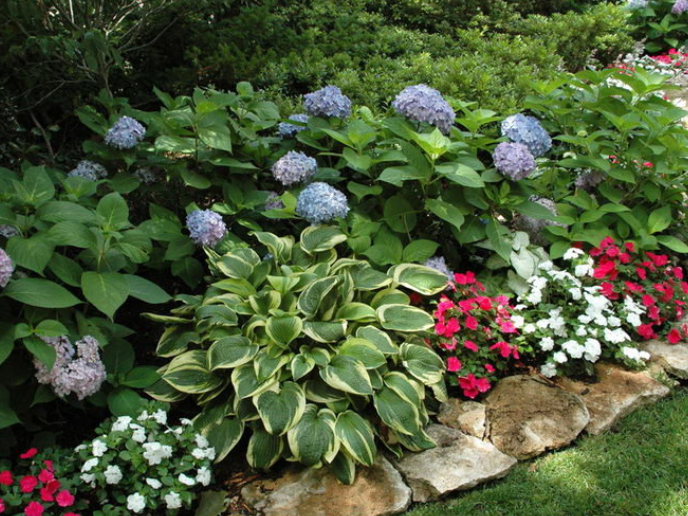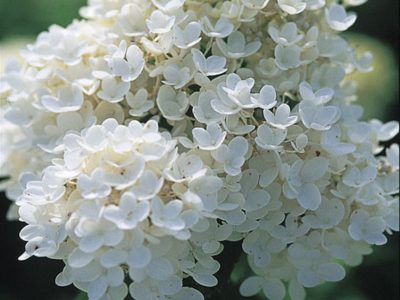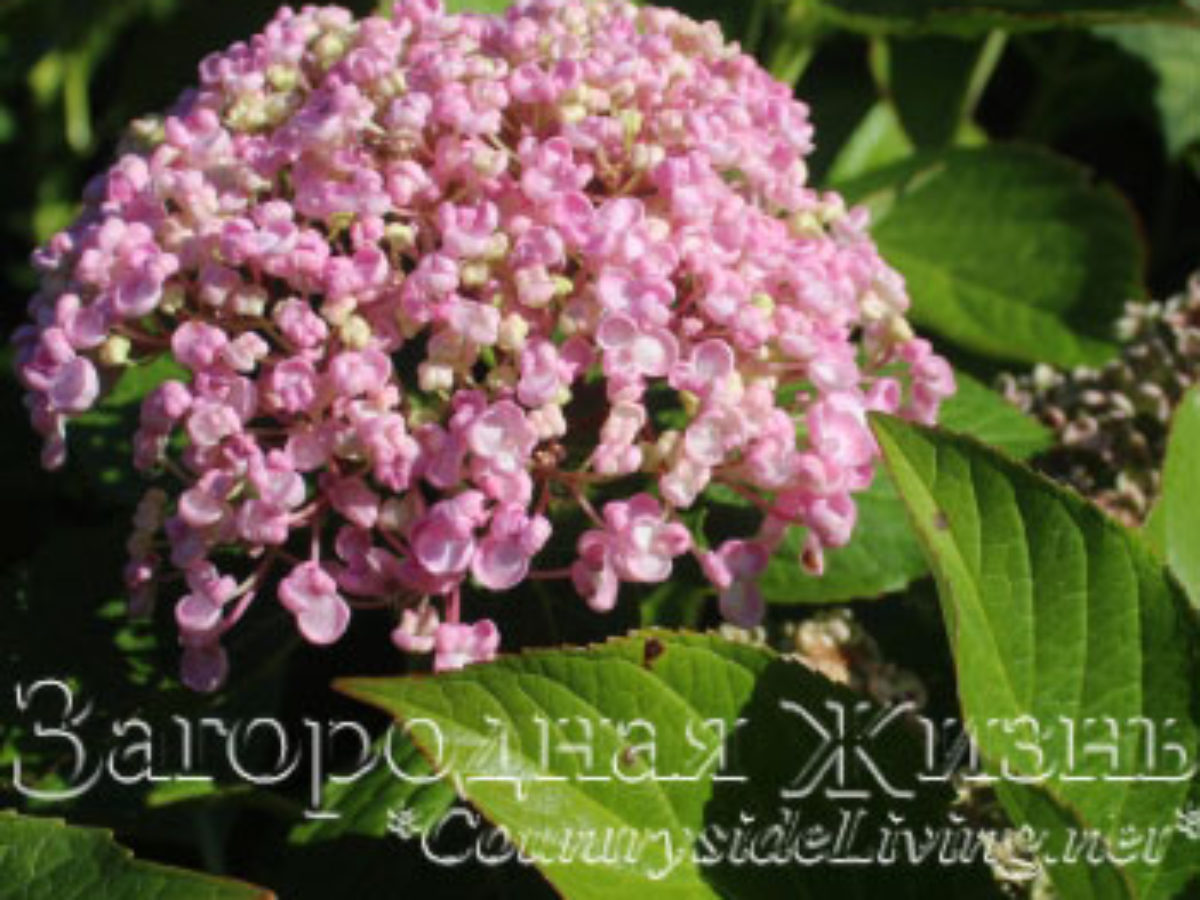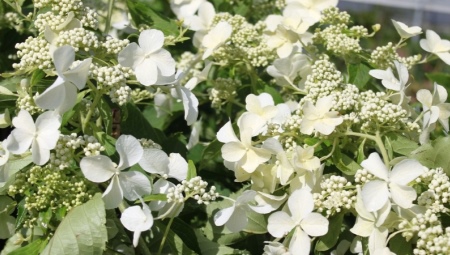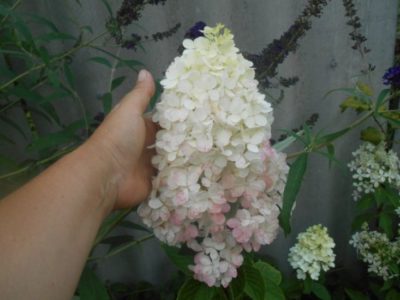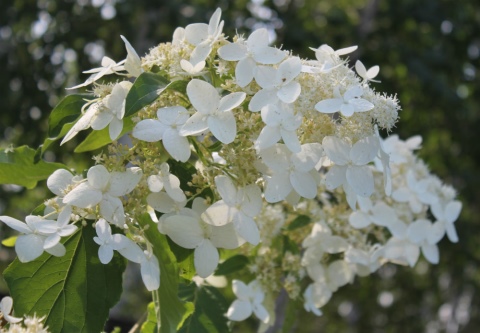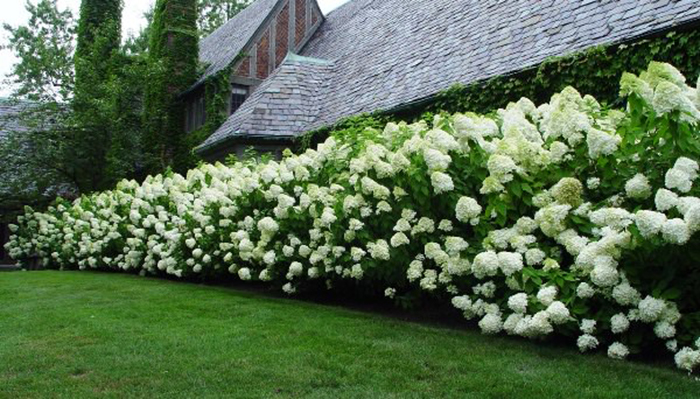Breeding options
There are several ways to propagate this plant. Depending on your capabilities, you can do this with seeds, dividing the bush, using layering, offspring or cuttings.
Seeds
This option is the most difficult and time consuming. Sowing hydrangea seeds should be in early March. The ground must be slightly damp. In this case, it is not necessary to sprinkle them additionally. After sowing the seeds, cover the container with foil. Germinated plants should be kept in a room where the temperature does not drop below 21-23 degrees.
After 3-4 weeks, the first shoots will begin to appear. Then they need to be grown for 2 years. When their height reaches 35 centimeters, the seedlings can be moved into the garden. This breeding option is only suitable for those varieties of hydrangea that exist in the wild, and have not been bred by breeders.
Cuttings
This is the most popular breeding method used by gardeners. It is worth harvesting the material in the middle of summer, when it is time for budding. It is best to choose cuttings of young side shoots. Each cutting should have 1-2 buds.
You need to cut them off in the morning, so they can retain moisture in themselves, which means they will take root faster. After that, the cuttings must be placed in water, into which a growth stimulator was added in advance.
When the first roots appear, it will be possible to plant the cuttings in the substrate prepared in advance. The mixture should consist of one part sand and two parts peat. They need to be watered daily. Young leaves should appear in a month. After that, the seedlings must be grown for another 2 years and only then planted in open ground.
Layers
Choosing this breeding option, the procedure should be postponed until the spring. First you need to dig up the ground near the bush, then make several grooves, the depth of which should be no more than 2-3 centimeters. Shoots must be laid there. They need to be fixed with small stags made from branches. Then it is worth sprinkling everything with earth.
At the beginning of autumn, each layer should form young shoots. When their height reaches at least 20 centimeters, young bushes must be spud. Then you need to repeat this procedure every week. At the beginning of October, all layers must be dug up and then divided. The height of each new seedling should be at least half a meter.
After separating them, you need to dig them in. And only a year later, future bushes can be planted in a place prepared in advance.
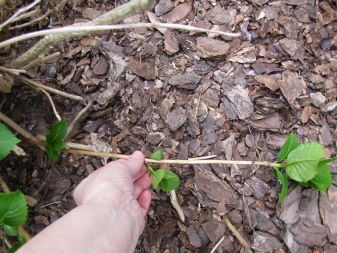

Offspring
This method is not suitable for everyone. In order for the plant to take root, in the autumn it is necessary to remove a small layer of earth along with young shoots. Then very carefully you need to separate it from the main bush and transplant it into a prepared place for growing.
By dividing the bush
So the hydrangea is divided only when gardeners decide to transplant it to another place. Most often, the transplant is done in early March. The bush must first be watered, wait a little and only then dig it out.
Next, the roots of the hydrangea must be rinsed under running water to remove the remaining dirt. Then you can start dividing the bush itself. Then you need to cut the shoots, as well as the roots and plant the plants in the holes made in advance.

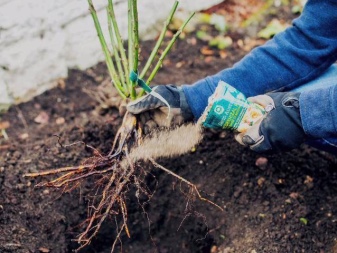
Agrotechnics
Hydrangea paniculata Silver Dollar is not whimsical to the soil, it can be planted on slightly acidic, loamy and fertile soil. However, the flower does not tolerate calcareous soil; more humus and peat will need to be added to this type of soil before planting. Heavy soil for planting hydrangeas is made easier by adding sand.
The flower grows well in slightly shaded places, if there is no such place in the garden for it, in summer, in hot weather, the plant will need to be shaded by making a hut for it made of agrofibre, fabric or polycarbonate.
Caring for any variety of panicle hydrangea requires frequent and abundant watering. In the summer heat, hydrangea is watered every day or every other day with large portions of water - 2-3 buckets per bush, depending on its size.
So that the moisture does not evaporate so quickly, the soil under the panicle hydrangea is mulched with pine bark, needles, shavings or sawdust.
It is undesirable to use chlorinated water for irrigating hydrangea paniculata, this can cause chlorosis of the leaves. It is best to collect several buckets of water in the morning and put them in the sun so that it gets warm, and the chlorine evaporates, and in the evening water the plants with this water. Watering is carried out in the morning or in the evening, water is poured under the roots so that it does not fall on the leaves and inflorescences.
For the first time, panicle hydrangea is fed in the spring, in April - with a small portion of nitrogen diluted in water for irrigation. Then, at the end of May, the plant is fed with potassium fertilizer, the solution is prepared at the rate of 1 tablespoon of the drug per bucket of water. The solution is poured under the roots along the perimeter of the crown.
During the budding period, one more top dressing is carried out - potassium-phosphorus fertilizer. 2 tablespoons of the powder are diluted in a bucket of water and poured under the bush in the same way. Fertilizers can simply be sprinkled under the hydrangea before rain or watering.
The last time potash-phosphorus fertilizers are applied after flowering is complete. Hard water is slightly acidified with vinegar or citric acid; instead, you can make a slightly pink solution of potassium permanganate. Thanks to this care, panicle hydrangea will bloom beautifully in summer and will tolerate low temperatures in winter.
Pruning of panicle hydrangea of any varieties is carried out in the spring, before the start of active sap flow. The plant needs spring pruning to form a bush and remove shoots that have frozen over the winter. In the fall, faded inflorescences are cut from the bush so that in winter they do not bend under the weight of the snow.
In addition, pruning is necessary for thinning, at this time weak and small shoots growing inside the bush are removed. The remaining branches are cut by a third for the appearance of additional shoots and inflorescences on them.
Rejuvenating pruning is carried out if the plant is many years old, and the old shoots no longer give high-quality inflorescences. With this pruning, all branches are cut in the fall, and the roots are covered for the winter. In the spring, new, strong shoots with decorative inflorescences grow out of them.
The Silver Dollar variety is resistant to diseases and pests, which is why gardeners love it. Chlorosis is easily treated with iron chelate or folk remedies; to protect against spider mites or other insect pests, the bush is treated with insecticides from time to time.
In autumn, caring for the plant consists in preparing for winter - sprinkle the roots with dry leaves or dried grass, do not cut the shoots. Inflorescences of the Silver dollar hydrangea will appear on last year's shoots, and if they are removed, the bush will not bloom.
If the winter in this area is too harsh, you can make a frame of boards for the hydrangea bush, cover it with leaves and cover it with a film or other suitable material.
Panicle hydrangea can withstand frosts down to -25 degrees, but you should not risk it, it is better to take care of it in the fall, so that, in response to your caring care, next summer the hydrangea will bloom with delicate white-pink inflorescences.
Hydrangea: what is this plant?
Treelike hydrangea is one of the most common perennial shrubs on summer cottages. It enjoys popularity quite deservedly, because with its beauty it is not too whimsical. It is a shrub from the hydrangea family. Its natural habitats are Japan, China, North America and Sakhalin.
According to one version, the plant was named after the beautiful Hortense, the sister of the French traveler Carl Heinrich Nassau-Siegen. In the 18th century, the aristocrat took part in the round-the-world expedition of the navigator Louis Antoine de Bougainville. Until that time, an unknown shrub was brought from Europe. There is another version of the origin of the name of hydrangea. French naturalist Philibert Commerson, also a member of the Bougainville Expedition, named the beautiful flower after his beloved. Be that as it may, the graceful thin stem with lush delicate inflorescences really resembles a charming young lady in some way.
Graceful inflorescences of tree hydrangea
Table 1. Characteristics of hydrangea tree
| Sign | Description |
|---|---|
| Tree shape | Bush |
| Height | 1-3 meters |
| Leaf shape | Ovate, jagged edges |
| Leaf size | 7-20 cm |
| Inflorescence shape | Thyroid (15 cm) |
| Flowers size | 2-3 cm |
| Coloring flowers | White, greenish to pink shades |
| Arrangement of colors | Collected in inflorescences at the ends of cuttings |
| Fruit shape | Box (3 mm) |
| Seed ripening time | October |
| Flowering period | June-October |
| Susceptibility to cold | Cold resistant |
| Peculiarities | Fast growing |
Representatives of the hydrangea family
The main features of this horticultural culture include the following:
- loves moisture;
- is actively growing;
- winter hardy;
- patient with lime in the soil (in comparison with other types of hydrangea);
- cuttings root well;
- grows rapidly even after a frosty winter.
Necessary conditions for growing
Further in the article, I will talk about the basic rules for planting hydrangea kiushu and caring for bushes. But first, I would like to dwell on general questions - what conditions are generally preferable for this plant? The choice of location and the entire further growing strategy depend on this.

Frost resistance
Although the homeland of the hydrangea kiushu in Southeast Asia, the plant thrives in most of Russia. It easily tolerates frosts above -30 ° C; only young seedlings require protection from the cold. Adult plants need shelter only to protect the branches from mechanical damage.
Illumination
Shrubs of hydrangea paniculata can grow safely both in open sunny areas and in partial shade. True, with an overabundance of light, the brushes become smaller, and growth slows down. It is also worth considering that kiushu is afraid of strong winds, so it is better to choose a protected and darkened place.
The soil
An important requirement is the peculiarities of the soil in which the panicle hydrangea kiushu is planted. She prefers clay substrates, and the more acidic, the brighter and more abundant the flowering will be.
Therefore, periodically, the land around the shrub is acidified with fertilizers, peat or water with diluted citric acid.
At the same time, on soil, even with a neutral pH, the plant will wither and weaken. Sandy soil is categorically unsuitable for the shrub. Since hydrangea does not tolerate a transplant and lives for a very long time in one place, it is worth choosing a site with the right conditions in advance.
Diseases and pests
The flower can "get sick" with chlorosis, septoria, gray rot, spotting (ascochitous or annular), ash, etc. In advanced stages, the bushes are taken out of the plot and burned, and the ground is treated with fungicides or a solution of potassium permanganate.
This type of hydrangea can be attacked by aphids, slobbery pennies, spider mites, bedbugs, nettle weevils, scoops, gall nematodes and other pests.
In preventive measures, spraying with insecticidal preparations, as well as folk remedies, is periodically used. In the fight against large insects, glue-based traps are used.
To prevent the death of Yunika, it is recommended to balance the amount of fertilization and watering. And then she will thank the gardener with a gorgeous flowering for many seasons.
How to plant?
Even a novice gardener will be able to plant the Unicorn hydrangea. To do this, you just need to follow the algorithm and not neglect the advice of experienced gardeners.
For planting, only healthy seedlings are taken, which they buy or receive on their own. At the same time, you need to know that it is better to plant 3-year-old plants that start flowering already in the year of planting. Purchased seedlings are sold in pots or with an open root system.
The former can be planted in the ground at any convenient time, while the latter need to be planted immediately after purchase. The purchased seedling should not have dry and yellowed areas, and the root system should be healthy and intact.

The diameter of the planting holes should be 60-80 cm, and the depth should vary from 50 to 60 cm.When planting several bushes at once, the distance between them should be at least 3 m.The prepared hole is spilled with water, after which drainage from broken brick is laid on its bottom or gravel.
A nutrient mixture made from peat, humus, fertile soil and sand with the addition of 25 g of urea and potassium sulfate, as well as 65 g of superphosphate is laid on top of the drainage. The mixture is poured in the form of a mound, a bush is placed on top, the roots are straightened and carefully sprinkled with fertile soil.
Hydrangea Pinkie Winky, description
In the photo, paniculate garden hydrangea is a Belgian variety called Pinky Winky.
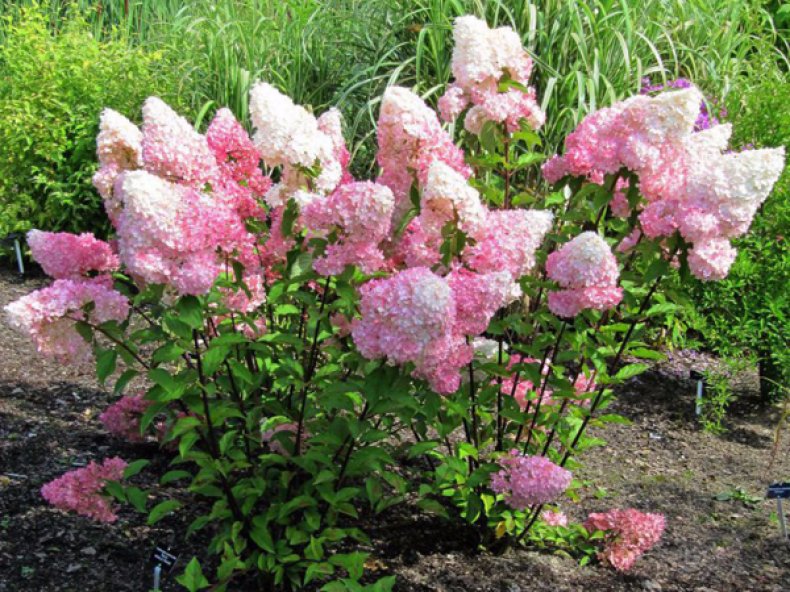
In different natural conditions of the country, the bush grows from 1.5 to 2.5 m. The adult plant has a wide, spreading crown. Shoots among green sparse leaves stand out with a brownish-red tint. Inflorescences of white color have a tapered apex and consist mainly of sterile flowers.
The main feature of the variety is the growth of inflorescences in the autumn. At the base, they acquire a bright purple color, and new large snow-white flowers begin to appear at the top. The inflorescences are of medium density and, with proper care, grow up to 25 cm long even at the first flowering.
Young bushes do not require a garter, but with age, during windy and rainy weather, so that the shoots do not break off, they make a garter to the support. The plant has good winter hardiness, an adult does not require shelter. According to reviews, Pinkie Winky is popular with gardeners.

